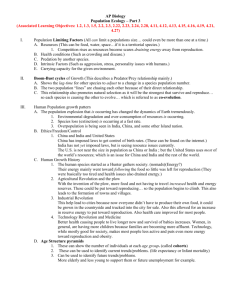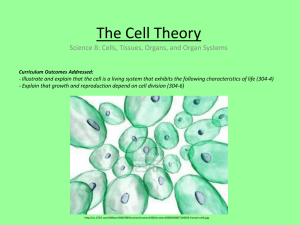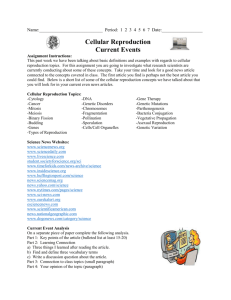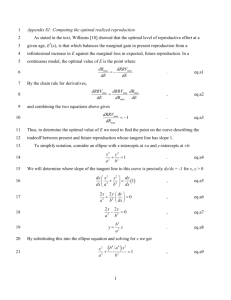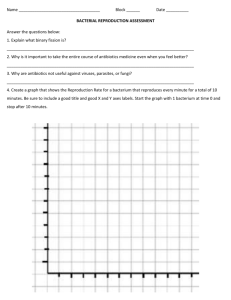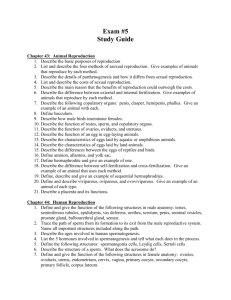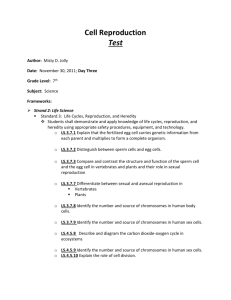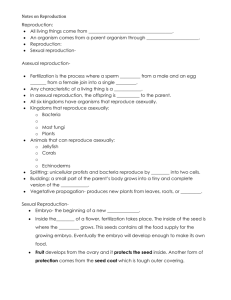topic 2.6 r,k strategists - Environmental Systems and Societies
advertisement
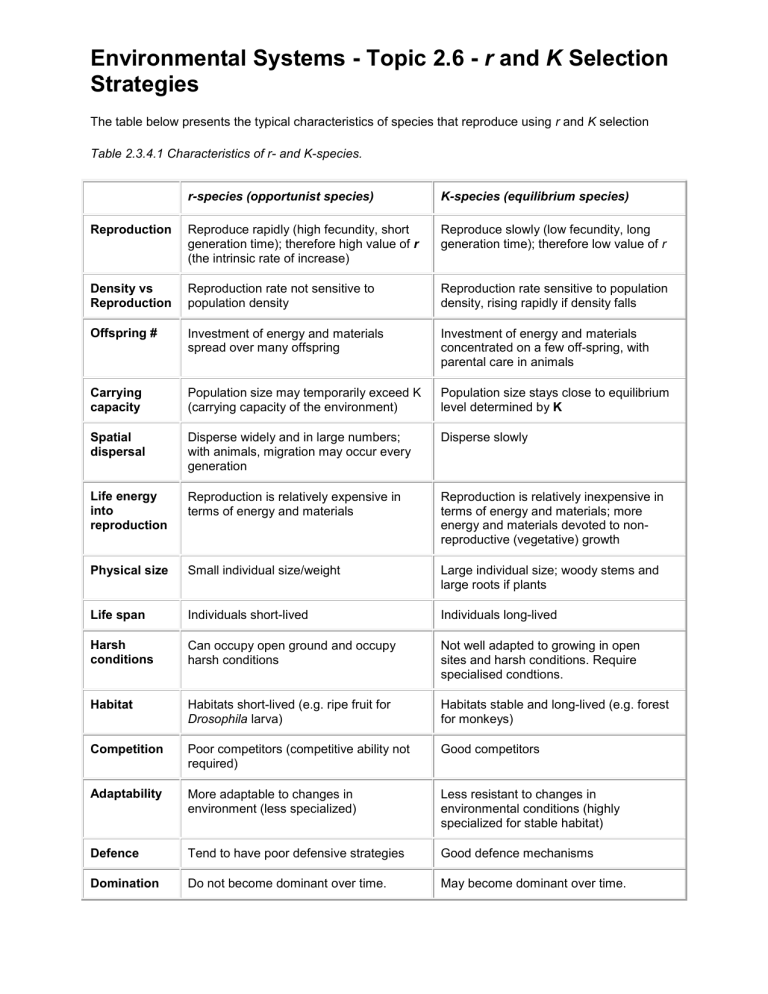
Environmental Systems - Topic 2.6 - r and K Selection Strategies The table below presents the typical characteristics of species that reproduce using r and K selection Table 2.3.4.1 Characteristics of r- and K-species. r-species (opportunist species) K-species (equilibrium species) Reproduction Reproduce rapidly (high fecundity, short generation time); therefore high value of r (the intrinsic rate of increase) Reproduce slowly (low fecundity, long generation time); therefore low value of r Density vs Reproduction Reproduction rate not sensitive to population density Reproduction rate sensitive to population density, rising rapidly if density falls Offspring # Investment of energy and materials spread over many offspring Investment of energy and materials concentrated on a few off-spring, with parental care in animals Carrying capacity Population size may temporarily exceed K (carrying capacity of the environment) Population size stays close to equilibrium level determined by K Spatial dispersal Disperse widely and in large numbers; with animals, migration may occur every generation Disperse slowly Life energy into reproduction Reproduction is relatively expensive in terms of energy and materials Reproduction is relatively inexpensive in terms of energy and materials; more energy and materials devoted to nonreproductive (vegetative) growth Physical size Small individual size/weight Large individual size; woody stems and large roots if plants Life span Individuals short-lived Individuals long-lived Harsh conditions Can occupy open ground and occupy harsh conditions Not well adapted to growing in open sites and harsh conditions. Require specialised condtions. Habitat Habitats short-lived (e.g. ripe fruit for Drosophila larva) Habitats stable and long-lived (e.g. forest for monkeys) Competition Poor competitors (competitive ability not required) Good competitors Adaptability More adaptable to changes in environment (less specialized) Less resistant to changes in environmental conditions (highly specialized for stable habitat) Defence Tend to have poor defensive strategies Good defence mechanisms Domination Do not become dominant over time. May become dominant over time. Examples bacteria, paramecium, aphids, flourbeetles, annual plants, weeds large tropical butterflies, condor (large bird of prey), albatross, humans, jungle and other hardwood trees The S curve is typical of population growth within a climax community that follows K selection strategies. The J curve is typical of population growth within pioneer communities that follow r selection strategies.

